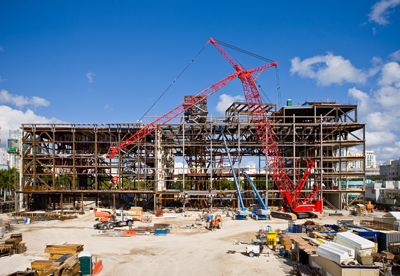If there's one thing that manufacturing leaders have come to realize about Industry 4.0, it's that the future means being on the cloud, first and foremost.
That's partly why hybrid cloud deployment is set to double over the next few years, according to research from Vanson Bourne and Nutanix. To get a better understanding of long-term investments, though, let's consider what's driving these changes.
Put simply, manufacturers are driven to the cloud by both "outside-in" and "inside-out" forces. An outside-in change is something driven by external market forces; in this case, that would be manufacturers adopting cloud simply because their competition is. An inside-out change would be some kind of shift designed to take advantage of a company's existing assets and get ahead of the market. Perhaps this would mean moving to the cloud to better leverage existing data and improve process efficiency in turn.
Of course, manufacturers should be responsive to both inside-out and outside-in needs in order to sustain growth. When it comes to cloud adoption, though, the trick is to not let one need overwhelm the other.
A Fundamental Shift: Information Technology Drives Revenue
In a recent conversation with a manufacturing company, we were trying to figure out the best steps for C-suite executives to take in the midst of a digital transformation. As we were taking stock of the existing legacy systems and processes in place at the firm, we told them that this was not the most opportune time to not just migrate to the cloud, but also to leverage data, to take the front seat in driving revenue for the firm — a strategic responsibility that traditionally CEOs or CIOs were tasked with.
However, this new responsibility comes with some complications: Any time you transform, you also have to rebuild complex systems. That can mean creating technical debt within an organization. In manufacturing, many Chief Information Officers are at risk of squandering their opportunity: Because it's such a significant change, a cloud migration with no robust strategy behind it can do more harm than good.
In making business more agile, IT departments are creating new competencies to respond to both outside-in and inside-out demands in manufacturing. With that in mind, these IT leaders should think beyond just a cloud migration. How will they ensure overall security? What technologies are they going to build on to new IT architecture?
In Industry 4.0, everything will be connected: that includes technology, processes, and people. Cloud migration is an essential first step, but there are many that must follow to unlock true value for manufacturers. If you want to see how your organization can make a more strategic shift to face Industry 4.0, reach out to Wipro. Let's map out your untapped potential and see what the future holds.
Shubendu Banerjee
Head – Global GTM (Go-To-Market) for Business Applications (Manufacturing Business Unit)
Shubendu leads the overall Go-To-Market function for application business in the Americas, UK & CE region, for the manufacturing business. Overall responsibilities include defining the strategic vision, thought leadership, and special initiatives to drive accelerated new business and revenue growth. He has 25+ years of experience demonstrating leadership and outstanding performance with large portfolios of customers across Asia, Europe, and North America.

Steel Industry require to outsource their IT operation to global IT partners to help them transform to cope up with changing business need, shrinking margin and resource skill gap.

This white paper details the installed base opportunity for the manufacturers and how they can tap it to grow their service business.

Manufacturers need to adapt to digital. The journey of Smart Manufacturing-Industry 4.0 will help reap benefits like revenue improvement, OPEX reduction and new revenue streams
